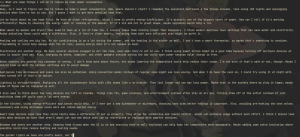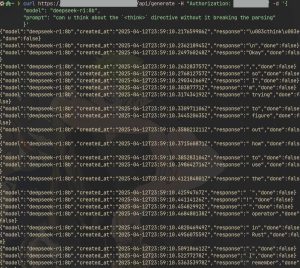Progress This Week:
-
Ollama Instance Deployment:
-
Set up an Ollama instance running the DeepSeek-R1-8B model for Erika to use.
- This model supports reasoning which makes it very good for our usecase
-
Deployed it behind the existing reverse proxy with token verification for secure access.
-
We can access it both over the cli and using the api


-
-
Python Backend Development:
-
Continued development of the Python backend to add more features and enhance its functionality.
-
Extended API endpoints and improved data handling for integration with Anya’s code and Home Assistant.
-
- Finalized Components
- Finalized and purchased components needed for the final house, planning to install the moment the house is ready on Erika’s end
As the project enters the verification phase, I am planning the following tests to ensure subsystem reliability and accuracy:
-
Electronics Subsystem Verification:
-
Conduct repeated tests on the power monitoring electronics.
-
Measure the accuracy of power draw readings under various loads (fans, motors, lights, etc.).
-
Check the robustness of the sensor communication and responsiveness of the system to rapid changes in load.
-
Use comparison against known reference measurements (multimeter and calibrated loads) to verify sensor accuracy.
-
-
Backend and Infrastructure Verification:
-
Perform functional tests on the backend APIs to ensure correct data logging, error handling, and performance under stress.
-
Test authentication mechanisms, API response times, and data integrity between the Ollama instance, backend, and Home Assistant integration.
-
Simulate prolonged operation to evaluate system stability and resilience.
-









